
University of Pittsburgh Press
The University of Pittsburgh Press is a publisher with distinguished lists in a wide range of scholarly and cultural fields. They publish books for general readers, scholars, and students. The Press focuses on selected academic areas: Latin American studies, Russian and East European studies, Central Asian studies, composition and literacy studies, environmental studies, urban studies, the history of architecture and the built environment, and the history and philosophy of science, technology, and medicine. Their books about Pittsburgh and Pennsylvania include history, art, architecture, photography, biography, fiction, and guidebooks.
Their renowned Pitt Poetry Series represents many of the finest poets active today, as reflected in the many prestigious awards their work has garnered over the past four decades. In addition, the Press is home to the Agnes Lynch Starrett Poetry Prize, the Donald Hall Prize for Poetry, and, in rotation with other university presses, the Cave Canem Poetry Prize. They sponsor the prestigious Drue Heinz Literature Prize, which recognises the finest collective works of short fiction available in an international competition.

Format: Paperback
Pages: 88
ISBN: 9780822958307
Pub Date: 30 Nov 2003
Description:
In a poetic voice that is at once reflective and lively, Sandra Kohler explores the patterns of everyday life and the inner drama of imagination. Though these poems are mostly set amidst the familiarity of a suburban household and the family garden, this environment appears far from mundane as Kohler peels away the veneer of domestic tranquility to reveal a world busy with human passion and the rhythms of the earth. Nature is present at every turn, an ethereal twin, as the narrator’s emotions take the form of cardinals in flight, a rushing river, or a potato sprouting from the dark.
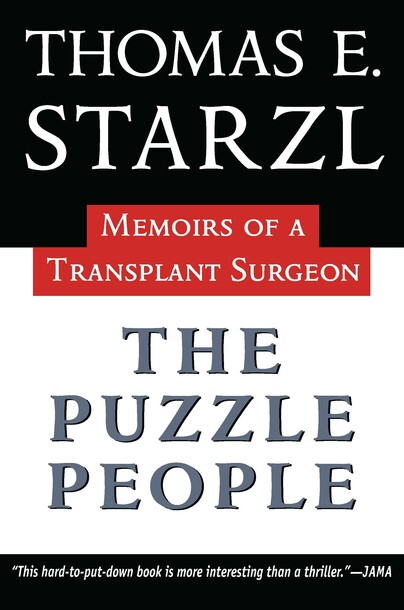
Format: Paperback
Pages: 400
ISBN: 9780822958369
Pub Date: 30 Nov 2003
Description:
Given the tensions and demands of medicine, highly successful physicians and surgeons rarely achieve equal success as prose writers. It is truly extraordinary that a major, international pioneer in the controversial field of transplant surgery should have written a spellbinding, and heart-wrenching, autobiography.Thomas Starzl grew up in LeMars, Iowa, the son of a newspaper publisher and a nurse.
His father also wrote science fiction and was acquainted with the writer Ray Bradbury. Starzl left the family business to enter Northwestern University Medical School where he earned both and M.D. and a PhD. While he was a student, and later during his surgical internship at the Johns Hopkins Hospital, he began the series of animal experiments that led eventually to the world\u2019s first transplantation of the human liver in 1963.Throughout his career, first at the University of Colorado and then at the University of Pittsburgh, he has aroused both worldwide admiration and controversy. His technical innovations and medical genius have revolutionized the field, but Starzl has not hesitated to address the moral and ethical issues raised by transplantation. In this book he clearly states his position on many hotly debated issues including brain death, randomized trials for experimental drugs, the costs of transplant operations, and the system for selecting organ recipients from among scores of desperately ill patients.There are many heroes in the story of transplantation, and many \u201cpuzzle people,\u201d the patients who, as one journalist suggested, might one day be made entirely of various transplanted parts. They are old and young, obscure and world famous. Some have been taken into the hearts of America, like Stormie Jones, the brave and beautiful child from Texas. Every patient who receives someone else\u2019s organ - and Starzl remembers each one - is a puzzle. \u201cIt was not just the acquisition of a new part,\u201d he writes. \u201cThe rest of the body had to change in many ways before the gift could be accepted. It was necessary for the mind to see the world in a different way.\u201d The surgeons and physicians who pioneered transplantation were also changed: they too became puzzle people. \u201cSome were corroded or destroyed by the experience, some were sublimated, and none remained the same.\u201d
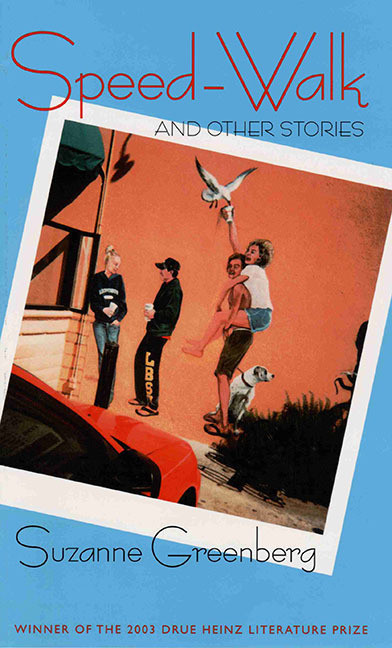
Format: Paperback
Pages: 184
ISBN: 9780822962472
Pub Date: 26 Oct 2003
Series: Drue Heinz Literature Prize
Description:
The characters in Speed-Walk and Other Stories often find themselves dislocated, living in places that do not resemble or feel like home. Their lives have somehow been turned on their axes, and often they cannot comprehend why. The stories in this stunning debut collection are united by their protagonists' common quest to make sense of the world, to bring it into focus, to set it right, to adapt.
��In selecting Suzanne Greenberg's fiction for the 2003 Drue Heinz Literature Prize, Rick Moody wrote, "A charge sometimes leveled against contemporary fiction these days is that it has abrogated its responsibility to depict civilization as it actually exists. . . . Speed-Walk replies forcefully to this aesthetic error by locating its protagonists in completely recognizable environments. . . . [They] are ever engaged by the routines of American life: walking the dog, eating at the sushi bar, doing the laundry." Tightly written yet realistically spare, these stories provide a blueprint for survival when the unexpected is thrust into an ordinary life.
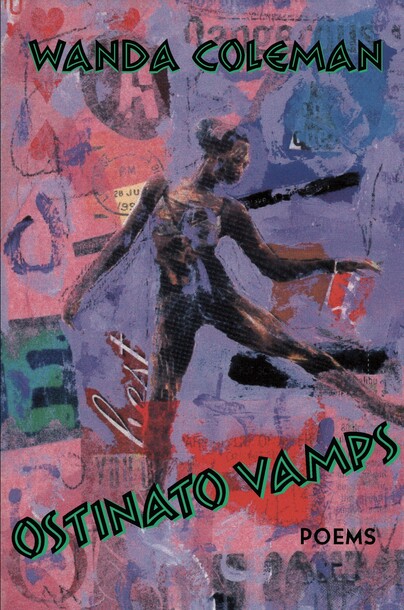
Format: Paperback
Pages: 128
ISBN: 9780822958338
Pub Date: 19 Oct 2003
Description:
Ostinato Vamps is Wanda Coleman's first book of poetry since the demise of her longtime publisher, Black Sparrow Press. It continues and enlarges the traits that have been her hallmark for more than three decades: a fierce adherence to the truth and a language so musical one can almost hear the blues line underneath her stanzas.Linguistically daring, lyrically breathtaking, stylistically bold, these poems both explore familiar territory and shatter stereotypes.
Life is difficult, often unfair, but it belongs to the living, as Coleman reminds us in no uncertain terms. Racing between an earthy eroticism and fatalistic despair, filled with humor and tragedy, these poems are alive. They breathe. They challenge us even as they reward us for seeking the truth.

Format: Paperback
Pages: 272
ISBN: 9780822958277
Pub Date: 28 Sep 2003
Description:
Those concerned with investigating the political functions of the family far too often identify only one: the production of \u201cgood democratic citizens.\u201d As a result, public discussion of family law and policy has been confined to a narrow continuum that ignores the family's other, often subversive, political functions.In The Public Family David Herring's goal is to create a new rhetoric that moves beyond the stalemate that often results from the war between advocates of parental rights and those of children's rights.
This \u201crhetoric of associational respect\u201d allows him to constructively address the role of rights and the limits of individualism in political and legal theory. While acknowledging the family's importance in facilitating state functioning and power in a large, pluralistic democracy (the aforementioned production of good citizens), Herring fully explores the ways in which the family produces diversity and promotes tolerance. Unlike other works on the subject, which view the differences between individuals as constituting the central challenge for American society, Herring focuses on the importance of such differences. In doing so, he enriches and enlivens the often divisive public discussion of family law and policy.
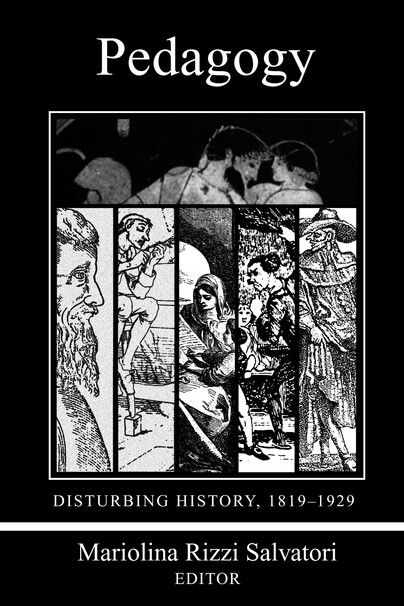
Format: Paperback
Pages: 400
ISBN: 9780822958222
Pub Date: 10 Sep 2003
Description:
Mariolina Salvatori presents an anthology of documents that examine the evolution of American education in the nineteenth century and meaning of the word pedagogy.
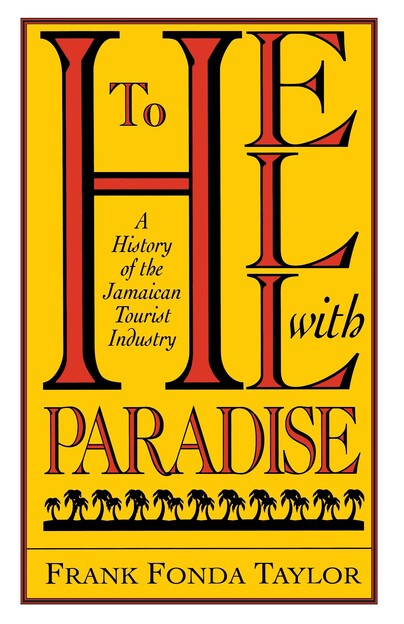
Format: Paperback
Pages: 256
ISBN: 9780822958239
Pub Date: 30 Jul 2003
Description:
In the course of the nineteenth century, Jamaica transformed itself from a pestilence-ridden \u201cwhite man\u2019s graveyard\u201d to a sun-drenched tourist paradise. Deftly combining economics with political and cultural history, Frank Fonda Taylor examines this puzzling about-face and explores the growth of the tourist industry into the 1990s. He argues that the transformations in image and reality were not accidental or due simply to nature\u2019s bounty.
They were the result of a conscious decision to develop this aspect of Jamaica\u2019s economy.Jamaican tourism emerged formally at an international exhibition held on the island in 1891. The international tourist industry, based on the need to take a break from stressful labor and recuperate in healthful and luxurious surroundings, was a newly awakened economic giant. A group of Jamaican entrepreneurs saw its potential and began to cultivate a tourism psychology which has led, more than one hundred years later, to an economy dependent upon the tourist industry.The steamships that carried North American tourists to Jamaican resorts also carried U.S. prejudices against people of color. \u201cTo Hell with Paradise\u201d illustrates the problems of founding a tourist industry for a European or U.S. clientele in a society where the mass of the population is poor, black, and with a historical experience of slavery and colonialism. By the 1990s, tourism had become the lifeblood of the Jamaican economy, but at an enormous cost: enclaves of privilege and ostentation that exclude the bulk of the local population, drug trafficking and prostitution, soaring prices, and environmental degradation. No wonder some Jamaicans regard tourism as a new kind of sugar.Taylor explores timely issues that have not been previously addressed. Along the way, he offers a series of valuable micro histories of the Jamaican planter class, the origins of agricultural dependency (on bananas), the growth of shipping and communications links, the process of race relations, and the linking of infrastructural development to tourism. The text is illustrated with period photographs of steamships and Jamaican tourist hotels.
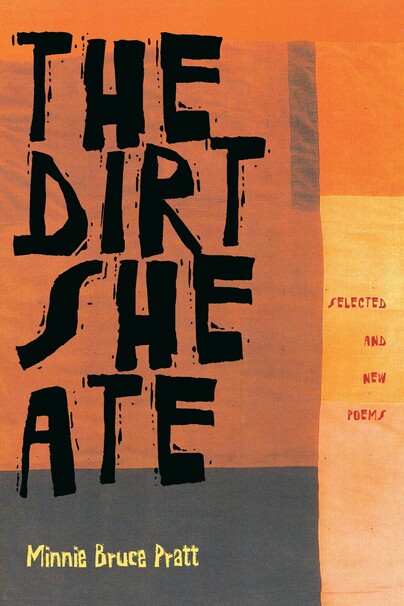
Format: Paperback
Pages: 136
ISBN: 9780822958260
Pub Date: 20 Jul 2003
Description:
Suffused with pain and power, Minnie Bruce Pratt's poetry is as evocative of the swamps and streets of the southern United States as it is of the emotional lives of those too often forced into the margins of society. Vivid, lush, and intensely honest, these poems capture the rough edges of the world and force us to pay attention.
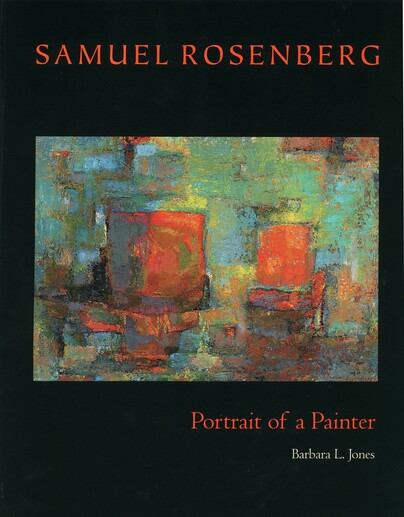
Format: Hardback
Pages: 248
ISBN: 9780822942139
Pub Date: 06 Jul 2003
Description:
While other artists moved to New York or Paris, painter Samuel Rosenberg (1896-1972) never left the city he called home. From the age of twelve, when he took his first art class at a settlement house in Pittsburgh's Hill District, through a vigorous career that spanned six decades, Rosenberg was challenged by the complex city whose artistic legacy he did much to shape. In Pittsburgh, Rosenberg created more than five hundred paintings, engaged with the dynamic progress of American painting in the twentieth century, and inspired generations of students.
This book is the first full study of his work and influence.The constancyof Rosenberg's career was change. He began as a portraitist (1915-1930), influenced by Velazquez, Rembrandt, Matisse, and later, Picasso. In the 1930s, however, Rosenberg turned to portray the city around him. Inspired by the steep hills, densely polluted atmosphere, crooked houses, and layered immigrant populations with intersecting poverties, he created emotional urban landscapes that ensured Pittsburgh's place in the American regionalist art movement.��Rosenberg's focus was the Hill District, where he lived as a young man. In poignant, socially conscious paintings, he traced the transitions of this gritty, multiethnic neighborhood through the Great Depression and Pittsburgh's early experiments in urban renewal. "Yes, I know there are artists in town who sneer at Pittsburgh, who want to go to Venice and paint canals," Rosenberg told a reporter. "But the artist who dislikes the town should . . . stay here and put his hate into pictures of the Pittsburgh scene. In doing so, he would have something to say."��In the 1940s, responding to the horrors of World War II, Rosenberg's subjects became more universal and allegorical. In paintings such as Israel (1945), his most reproduced work, haunting human figures do not allow viewers to remain indifferent to the world situation. Here he began experiments with abstraction and the quality of light, a search he would continue for the rest of his life.��From 1949 until his death in 1972, Rosenberg developed his own form of abstract expressionism, translating emotion with color, but without entirely abandoning representation. Using sequential layers of translucent color and transparent glazes, Rosenberg was able to achieve a penetrating, shimmering effect in his work. His paintings from this period are reminiscent of stained glass windows in that they seem to emit light rather than reflect it.��Samuel Rosenberg's paintings were exhibited widely, from the World's Fair (1939) to the nation's preeminent museums, including the Museum of Modern Art, the Whitney Museum of American Art, the Corcoran Gallery in Washington, D.C., and the Pennsylvania Academy of Fine Arts in Philadelphia. He had twenty-six solo exhibitions during his lifetime, and he was accepted into the prestigious Carnegie International in 1920, 1925, and every subsequent exhibition from 1933 to 1967.��But it is possible that Rosenberg's most enduring legacy is his teaching. For more than forty years he taught drawing and painting at Carnegie Institute of Technology (now Carnegie Mellon University), where his students included Philip Pearlstein, Mel Bochner, and Andy Warhol-whom Rosenberg saved from expulsion in 1947. He chaired the art department at the Pennsylvania College for Women (now Chatham College). He directed art programs and taught for decades at two community art schools: the Irene Kaufmann Settlement in the Hill District and the Isaac Seder Educational Center for the Young Men's and Women's Hebrew Association, which merged in 1961. A revered and devoted master teacher, he awakened several generations of Pittsburgh artists to the "adventure," as he called it, of art.��Samuel Rosenberg: Portrait of a Painter accompanies the first major retrospective of his work since 1960. In a thorough and carefully researched essay, accompanying eighty-two color and fifty black-and-white reproductions, curator Barbara L. Jones tells the story of Rosenberg's life, his evolving artistic vision, and his teaching legacy. She also provides biographical, exhibition, and award chronologies, along with a complete catalog of paintings and preparatory sketches. Lively sidebars by regional historians Barbara Burstin, Eric Davin, and Laurence Glasco, and by artist and former student Bennard Perlman, give social and cultural context, recreating the Pittsburgh in which this remarkable artist lived and worked.
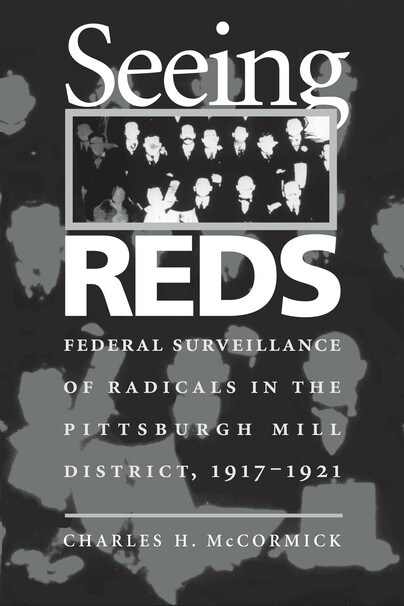
Format: Paperback
Pages: 256
ISBN: 9780822958215
Pub Date: 01 Jul 2003
Description:
During World War I, fear that a network of German spies was operating on American soil justified the rapid growth of federal intelligence agencies. When that threat proved illusory, these agencies, staffed heavily by corporate managers and anti-union private detectives, targeted antiwar and radical labor groups, particularly the Socialist party and the Industrial Workers of the World.Seeing Reds, based largely on case files from the Bureau of Investigation, Military Intelligence Division, and Office of Naval Intelligence, describes this formative period of federal domestic spying in the Pittsburgh region.
McCormick traces the activities of L. M. Wendell, a Bureau of Investigation \u201cspecial employee\u201d who infiltrated the IWW\u2019s Pittsburgh recruiting branch and the inner circle of anarchist agitator and lawyer Jacob Margolis. Wendell and other Pittsbugh based agents spied on radical organizations from Erie, Pennsylvania, to Camp Lee, Virginia, intervened in the steel and coal strikes of 1919, and carried out the Palmer raids aimed at mass deportation of members of the Union of Russian Workers and the New Communist Party.McCormick\u2019s detailed history uses extensive research to add to our understanding of the security state, cold war ideology, labor and immigration history, and the rise of the authoritarian American Left, as well as the career paths of figures as diverse as J. Edgar Hoover and William Z. Foster.
Knowing Stephanie
Format: Hardback
Pages: 144
ISBN: 9780822942122
Pub Date: 04 May 2003
Description:
Stephanie Byram was an active, athletic young woman entering the prime of her life. She held dreams of earning her doctorate, pursing a career, falling in love, and starting a family. A doctor's visit, shortly after her thirtieth birthday, changed everything.
��She had been concerned about a painful, swollen right breast, and tests confirmed the presence of a tumor. Stephanie was diagnosed with highly aggressive, highly malignant breast cancer-Stage IIIb infiltrative ductal carcinoma-and within two months she underwent a double mastectomy. Doctors gave her a 50 percent chance of surviving five years.��Despite this prognosis, Stephanie looked to the future, and refused to be deterred by the obstacles thrown suddenly into her path. Though she was rarely cancer-free and suffered recurrences that were progressively more invasive and damaging to her body, over the course of the next eight years she would live a life of her choosing.��Stephanie fell in love, married, and bought a home. She earned her Ph.D., and even found the time and energy to revise her dissertation topic to how women make medical decisions after they have been diagnosed with life-threatening illnesses. She traveled to London, Tibet, and Hawaii; went on safari in Zambia and Botswana, rang in the millennium atop the Great Barrier Reef; hiked the grueling, thirty-five-mile Inca trail to Machu Picchu on her honeymoon, just weeks after a devastating recurrence; and visited the Grand Canyon before her death in June 2001.��Stephanie came to appreciate the details and experiences found in a typical day. Learning to live in the moment, she found joy while playing with her cats, tending her garden, observing the birds jostling at the feeder, walking in the park by moonlight, laughing with friends. And running.��Always an avid runner, Stephanie placed even greater importance on the sport following her diagnosis. She vowed to be the first person to run in each Susan G. Komen Race for the Cure, and would eventually run in thirty out of sixty-one events. To help publicize this uncommon feat, she approached Charlee Brodsky about taking some photographs for inclusion in a press packet. What eventually evolved was much more.��As their working relationship grew, so did their bond. Stephanie was Brodsky's subject, but they became collaborators and closer friends. They developed art exhibitions, a video, and often gave lectures, presentations, and inspirational talks to groups across the country. And, now, together they have created this book. Knowing Stephanie combines Brodsky's photographs and Stephanie's dialogue, which along with Jennifer Matesa's biographical essay, "Reconstructing a Life," paints a complete and compelling portrait of an extraordinary woman.��For Stephanie, this project was an opportunity to visualize herself-her life and her body-differently. According to Brodsky, "She was able to transform her profound disappointment with the cards she was dealt into a life that was about living." In so doing, Stephanie has provided a treasure for us all.
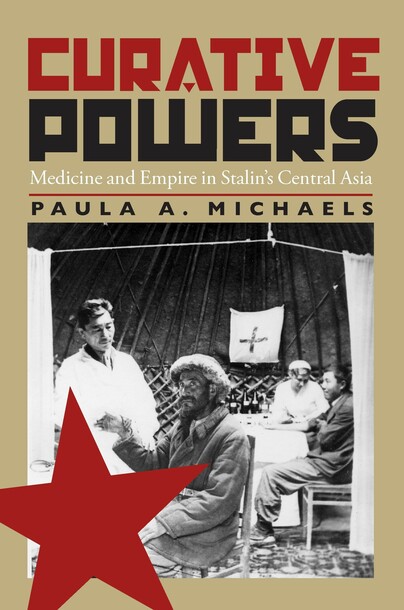
Format: Paperback
Pages: 264
ISBN: 9780822961291
Pub Date: 14 Apr 2003
Description:
Finalist, PEN Center USA Literary Awards, Research NonfictionRich in oil and strategically located between Russia and China, Kazakhstan is one of the most economically and geopolitically important of the so-called Newly Independent States that emerged after the USSR's collapse. Yet little is known in the West about the region's turbulent history under Soviet rule, particularly how the regime asserted colonial dominion over the Kazakhs and other ethnic minorities.Grappling directly with the issue of Soviet colonialism, Curative Powers offers an in-depth exploration of this dramatic, bloody, and transformative era in Kazakhstan's history.
Paula Michaels reconstructs the Soviet government's use of medical and public health policies to change the society, politics, and culture of its outlying regions. At first glance the Soviets' drive to modernize medicine in Kazakhstan seems an altruistic effort to improve quality of life. Yet, as Michaels reveals, beneath the surface lies a story of power, legitimacy, and control. The Communist regime used biomedicine to reshape the function, self-perception, and practices of both doctors and patients, just as it did through education, the arts, the military, the family, and other institutions.Paying particular attention to the Kazakhs' ethnomedical customs, Soviet authorities designed public health initiatives to teach the local populace that their traditional medical practices were backward, even dangerous, and that they themselves were dirty and diseased. Through poster art, newsreels, public speeches, and other forms of propaganda, Communist authorities used the power of language to demonstrate Soviet might and undermine the power of local ethnomedical practitioners, while moving the region toward what the Soviet state defined as civilization and political enlightenment.As Michaels demonstrates, Kazakhs responded in unexpected ways to the institutionalization of this new pan-Soviet culture. Ethnomedical customs surreptitiously lived on, despite direct, sometimes violent, attacks by state authorities. While Communist officials hoped to exterminate all remnants of traditional healing practices, Michaels points to evidence that suggests the Kazakhs continued to rely on ethnomedicine even as they were utilizing the services of biomedical doctors, nurses, and midwives. The picture that ultimately emerges is much different from what the Soviets must have imagined. The disparate medical systems were not in open conflict, but instead both indigenous and alien practices worked side by side, becoming integrated into daily life.Combining colonial and postcolonial theory with intensive archival and ethnographic research, Curative Powers offers a detailed view of Soviet medical initiatives and their underlying political and social implications and impact on Kazakh society. Michaels also endeavors to link biomedical policies and practices to broader questions of pan-Soviet identity formation and colonial control in the non-Russian periphery.
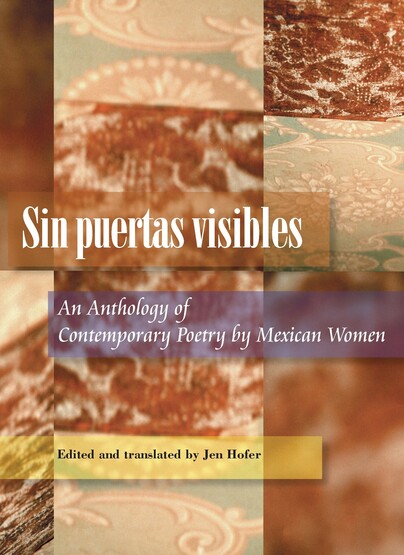
Format: Paperback
Pages: 256
ISBN: 9780822957980
Pub Date: 13 Apr 2003
Description:
Sin puertas visibles is a fully bilingual anthology that features emerging women poets whose work provides a taste of the adventurous new spirit infusing Mexican literature. All eleven poets represented have had at least one book published in Mexico, yet none of their work has been translated into English until now.Featuring the work of: Cristina Rivera-Garza, Carla Faesler, Ang\u00e9lica Tornero, Ana Bel\u00e9n L\u00f3pez, Silvia Eugenia Castillero, M\u00f3nica Nepote, Dana Gelinas, Mar\u00eda Rivera, Ofelia P\u00e9rez Sep\u00falveda, Dorantes, and Laura Sol\u00f3zano.
Mexico poesses one of Latin America's most important poetic traditions, but its depth and range are virtually unknown to readers north of the border. Reflecting the diversity and complexity f contemporary mexican poetry, the poems presented here are by turns meditative and explosive, sensuous and inventive, ironic and tender--in short, they are subversive, provocative, and bold.
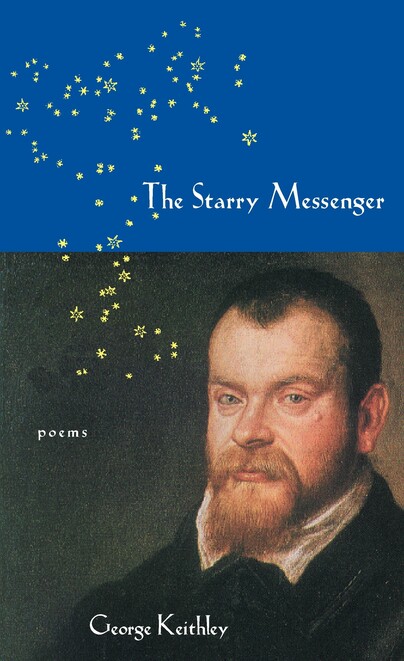
Format: Paperback
Pages: 80
ISBN: 9780822958161
Pub Date: 06 Apr 2003
Description:
The poems in The Starry Messenger explore the many facets of Galileo Galilei's life and times--his troubled childhood, his appetites and love affairs, his early scientific discoveries, his famed exploration of the heavens, his house arrest, his blindness. Emphasizing Galileo's independent nature and his affection for his mistress and daughter, George Keithley provides one of the most personal portraits of the astronomer ever written. In the process, he depicts the sensuous world of religion, magic, and science that was seventheenth-century Florence, Padua, Venice, Ostia, and Rome.

Format: Paperback
Pages: 128
ISBN: 9780822958147
Pub Date: 16 Mar 2003
Description:
Long for This World features the best of Ronald Wallace's work from his previous collections of poetry--Plums, Stones, Kisses & Hooks , Tunes for Bears to Dance To, People and Dog in the Sun, The Makings of Happiness, Time's Fancy and The Uses of Adversity--along with a generous selection of twenty-six new poems. If Wallace's recent poems sometimes seem darker and deeper, more meditative and complex, less sanguine about the tragedies of daily life, they never sacrifice the comic sense, the synthesis of technical skill and strong emotion, and the sensory immediacy that have become his hallmarks.
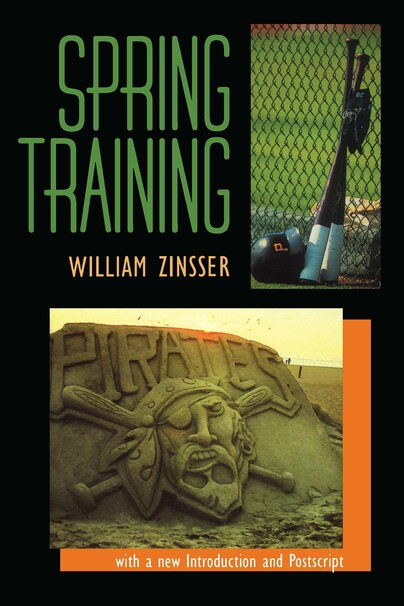
Format: Paperback
Pages: 240
ISBN: 9780822958246
Pub Date: 16 Mar 2003
Description:
Spring training, a time when every team is in first place, is an American tradition dating back to the early years of the twentieth century. William Zinsser vividly brings to life the unique, once-a-year relationship between Bradenton, Florida, and its adopted team, the Pittsburgh Pirates.In 1988 the Pirates were an unproven yet promising bunch with high hopes of competing for the National League pennant.
Given rare access to players, management, scouts and umpires, Zinsser sought to discover how a team prepares for the longest season in professional sports.As valid today as it was when first published, Spring Training reveals how the fundamentals of baseball are taught and learned. The author has added a new introduction and postscript, which includes a lengthy interview with manager Jim Leyland about the lessons that can be learned from losing.

















